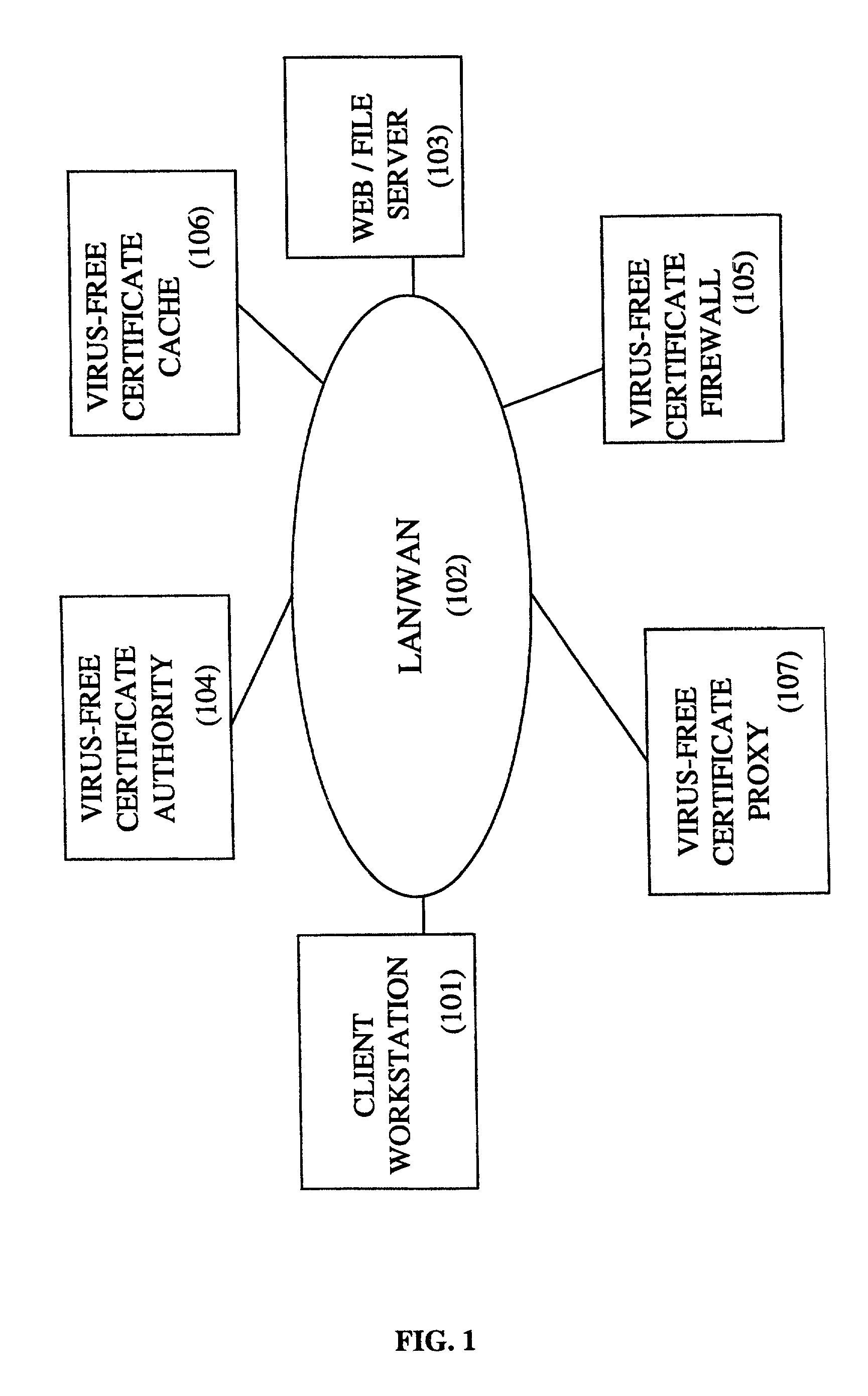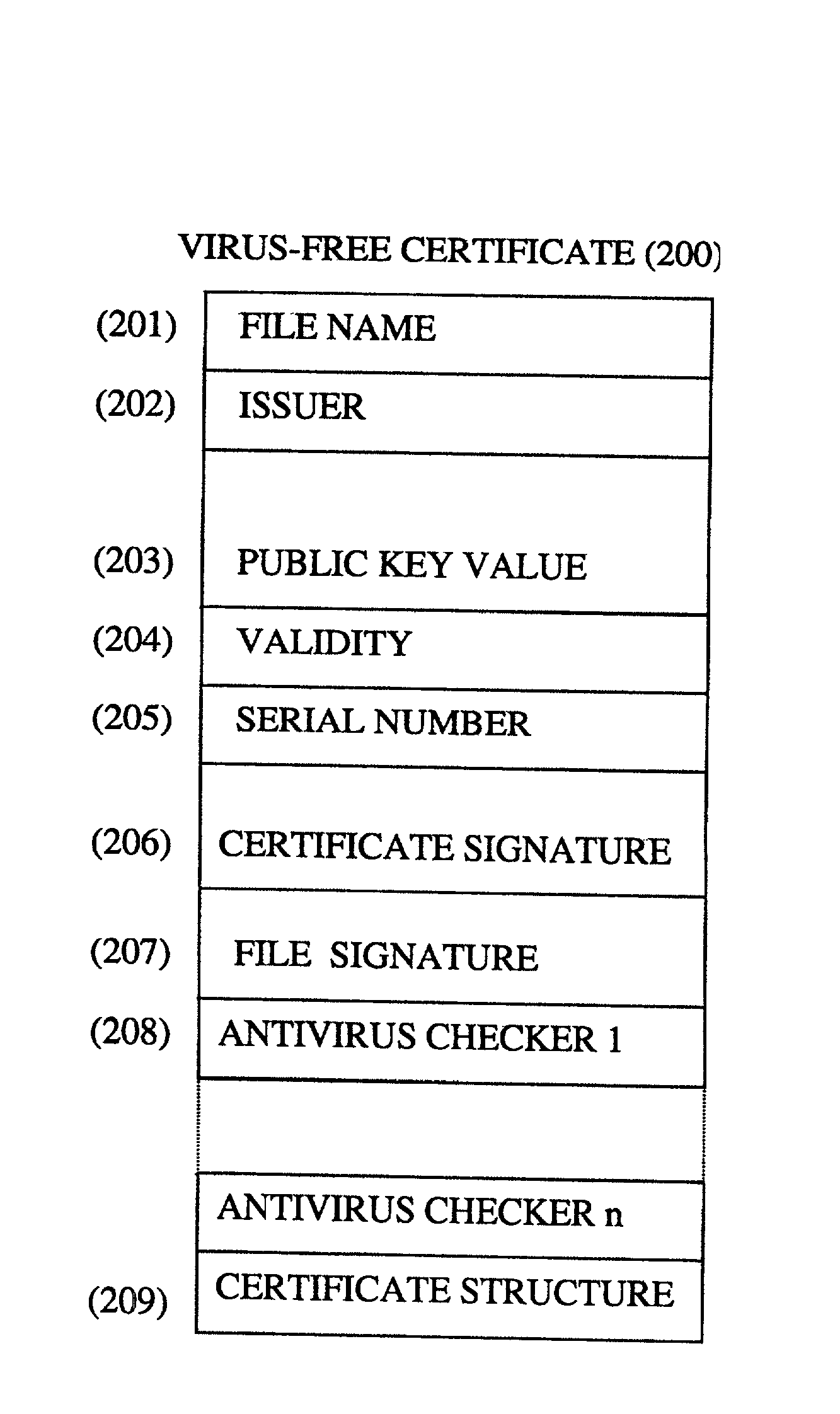Method and system for caching virus-free file certificates
a file certificate and certificate technology, applied in the field of computer viruses, can solve the problems of increasing complexity and difficulty of virus protection for large organizations, threat has spread, and viral infections threaten only data residing on storage media such as hard drives and floppy disks, so as to simplify computing resources, the performance impact of the system is also limited
- Summary
- Abstract
- Description
- Claims
- Application Information
AI Technical Summary
Problems solved by technology
Method used
Image
Examples
Embodiment Construction
[0100] FIG. 1 describes the different entities involved in the virus system disclosed in the present invention. In most of the cases, the file that the Client Workstation (101) requires is stored in a File Server (for instance a WEB Server) (103). A Certificate is associated with this file on the File Server (103). The Certificate indicates that the file has been processed by a list of anti-virus programs (also referred to as anti-virus checkers), and is virus free. It is an object of the Virus-free Certificate Authority (VCA) (104) to build such Certificates (called Virus-free Certificates-VC). The Client Workstation, the File Server, the Virus-fee Certificate Authority are attached to a LAN / WAN network (102) (Local Area Network / Wide Area Network), which can include the Internet network.
[0101] The Client workstation (101) downloads the file and the associated anti-virus Certificate from the File Server (103) through a network device within the WAN / LAN network. Said network device i...
PUM
| Property | Measurement | Unit |
|---|---|---|
| byte length | aaaaa | aaaaa |
| dimension | aaaaa | aaaaa |
| areas | aaaaa | aaaaa |
Abstract
Description
Claims
Application Information
 Login to View More
Login to View More - R&D
- Intellectual Property
- Life Sciences
- Materials
- Tech Scout
- Unparalleled Data Quality
- Higher Quality Content
- 60% Fewer Hallucinations
Browse by: Latest US Patents, China's latest patents, Technical Efficacy Thesaurus, Application Domain, Technology Topic, Popular Technical Reports.
© 2025 PatSnap. All rights reserved.Legal|Privacy policy|Modern Slavery Act Transparency Statement|Sitemap|About US| Contact US: help@patsnap.com



